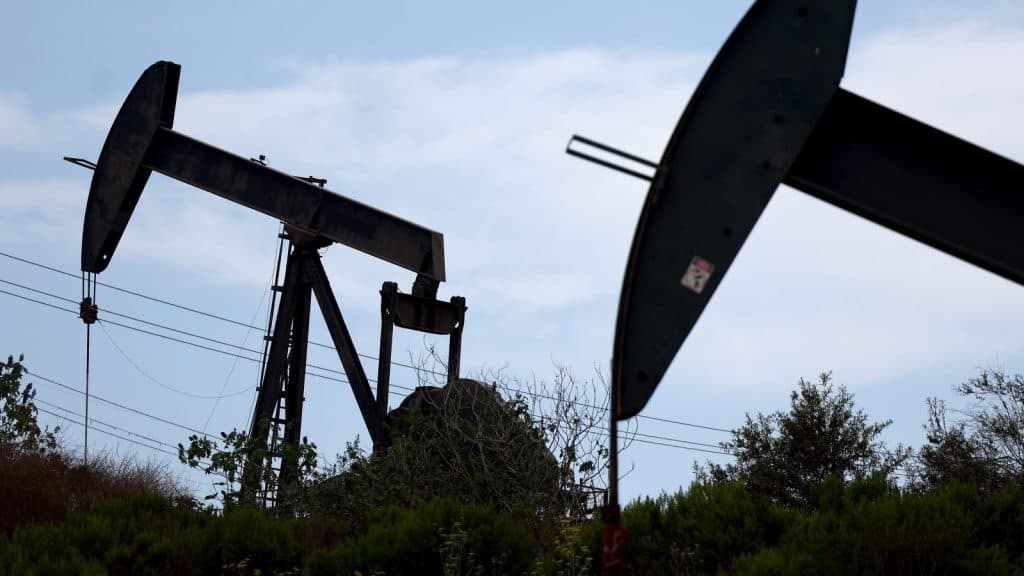
Crude oil futures rose 1% on Monday and are on pace to post a gain for the month, as signs point to strengthening gasoline demand in the US and geopolitical tensions flare again in the Middle East.
Oil prices pulled back Friday, snapping a recent winning streak, but closed out the week nearly 3% higher. West Texas Intermediate and Brent are on pace for a monthly gain of 6% and 5.4%, respectively.
U.S. crude oil booked its worst month of the year in May, but prices have bounced back on hopes that the market will tighten on summer fuel demand.
Here are Monday’s closing energy prices:
- West Texas Intermediate August contract: $81.63 per barrel, up 90 cents, or 1.11%. Year to date, U.S. oil is up 13.9%.
- Brent August contract: $86.01 per barrel, up 77 cents, or 0.9%. Year to date, the global benchmark is ahead by 11.6%.
- RBOB Gasoline July contract: $2.51 per gallon, little changed. Year to date, gasoline is up 19.4%.
- Natural Gas July contract: $2.81 per thousand cubic feet, up 3.92%. Year to date, gas has gained 11.8%.
“The chief underlying reason behind the price strength, nonetheless, is the growing confidence that global oil inventories will inevitably plunge during the summer in the northern hemisphere,” Tamas Varga, an analyst with oil broker PVM, said in a note Monday.
Ryan McKay, senior commodity strategist at TD Securities, said supply risks are now back in focus as tensions are building on the Israel-Lebanon border. Israel and the Iran-backed militia group Hezbollah have traded threats of war in recent weeks.
Prime Minister Benjamin Netanyahu said Israel would re-deploy forces to the north of the country as the intensive phase the war in Gaza comes to an end.
“A renewed surge in our energy supply risk indicator can further support price action in the near term,” McKay told clients in a note Monday, but the strategist argued that funds would start to liquidate long positions if WTI falls below $81 per barrel.
Ukraine President Volodymyr Zelenskyy claimed Monday that Kyiv has hit more than 30 Russian oil refineries, terminals, and bases without providing a time frame of when the attacks occurred.
Goldman Sachs, JPMorgan and Citi have all forecast that inventories should start to fall on fuel demand OPEC+ maintaining output cuts until October.
U.S. oil, gasoline, and distillate inventories fell for the week ending June 14, the most recent available data. JPMorgan said gasoline consumption had surged to 9.4 million barrels per day that same week, the highest level for the period since the pandemic ended.